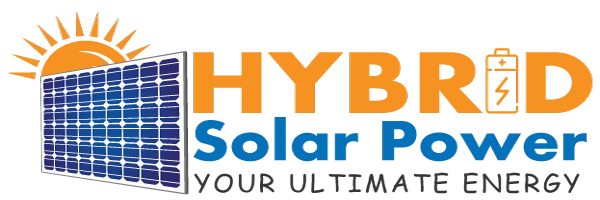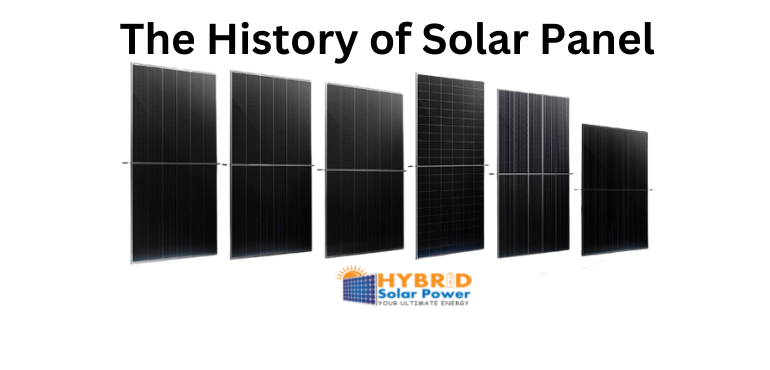A Brief History of Solar Panels
It wasn’t until 1839 that the first solar panel was invented. A French physicist named Alexandre-Edmond Becquerel discovered the photovoltaic effect while experimenting with an electrolytic cell made up of silver chloride in an aqueous solution. He found that light falling upon the electrode caused the production of electricity.
The first solar cell was built by Charles Fritts in the 1880s. Fritts coated the selenium semiconductor with a thin layer of gold to make it work as a photovoltaic cell. These cells were only 1% efficient. In 1955, Bell Labs created the first silicon solar cell.
Although there are many different types of solar panels, the basic process for converting sunlight into electricity has remained the same for over 150 years. The principle was first described in the early 1800s, and the first primitive solar cells were made soon after that. In 1883, Charles Fritts installed the first successfully operating solar cells on a New York City roof. Fritts’s cells were made from thin wafers of selenium, a semiconductor.
The first solar panels were invented in the late 1800s by French physicist Auguste Mouchout. He was the first to successfully use a solar engine to power a pump. Solar panels were not used for generating electricity until the early 1900s. The first solar panels were only able to convert about 1% of sunlight into electricity.
Early Solar Energy Uses
The energy of the sun was first employed as a heat source in early solar applications. Buildings have been constructed in a way that maximizes light entrance and warmth going all the way back to Ancient Egyptian civilizations.
The Ancient Greeks and Romans began harnessing sunlight to make fire torches around the third century B.C. being especially useful for religious and holy occasions.
The first solar cell was developed between the 16th and 17th centuries.
- In the 16th century, Horace-Benedict de Saussure, a Swiss scientist, created the first solar cell in 1767.
- Invention and advancement in the development of solar energy continued 72 years later.
- The Photovoltaic Effect was developed by French scientist Edmond Becquerel when he was just 19 years old. It states that materials can produce voltage and electric current when exposed to light.
- Another significant development occurred in 1870 with the revelation that light could be converted into electricity without the use of heat.
- The first functional selenium solar cell was developed by American inventor Charles Fritz at the end of the 17th century (current solar panels use silicon-based cells).
The development of the contemporary solar photovoltaic (PV) panel has, until this point, been a result of the contributions and experimental findings of numerous scientists and inventors.
Early 20th Century: The Modernisation of Solar Energy
- 26-year-old Albert Einstein wrote “On a Heuristic Viewpoint Concerning the Production and Transformation of Light” in 1905, when he was still a young man. where he researched the phenomenon that is now known as the photoelectric effect.
- 1917 Einstein introduced the idea that light acts as electromagnetic force-carrying packets, providing the theoretical underpinning for photovoltaics
- Bell Laboratories researchers created the first usable solar cell by 1954.
- The first solar-powered phone call was placed around the middle of the 1950s. demonstrating the continued advancement and acceptance of solar energy.
- General Electric unveiled the first solar-powered radio a year later, in 1956. The radio may run both during the day and at night.
- A few years later, the US tested the use of solar PV cells on satellites orbiting the Earth. Solar energy has been the standard energy source for space applications ever since!
- Vanguard I, a spacecraft, became the first to use solar power in 1958.
- The first solar vehicle, including a solar-panel roof and a 72-volt battery, was unveiled in London in 1960.
- The first industrial solar heat pump was patented in the 1890s.
- The first functional selenium solar cell was developed by American inventor Charles Fritz at the end of the 17th century (silicon is now used in solar panel cells today).
Up until this moment, the development of the contemporary solar photovoltaic (PV) panel had been made possible by the contributions and experimental findings of numerous scientists and inventors.
The 2000s: Commercialization of solar energy
Solar energy starts to become widely available in the 2000s. The market for renewable energy is increasing, and in the coming decade, solar PV technology will progress significantly and be installed more widely.
- In the EU, renewable energy targets are currently required.
- We anticipate the growth of a competitive domestic energy market in which renewable energy sources will play a significant role.
- The renewables sector has added more capacity than any other from the 2000s to the 2010s (and this trend is still going strong!).
- According to the European Photovoltaic Industry Association, more than 30 gigawatts of solar PV capacity were built globally in 2012, bringing the total number of installations to more than 100 gigawatts.
- For owners of homes and businesses, solar panels are becoming more effective, practical, and accessible. More than a million solar PV installations existed as of 2018.
- The UK used solar energy to produce 3.9% of its total electricity in 2018.
- In the Dutch North Sea, the first offshore floating solar farm was erected in 2019.
- By 2020, operating an old coal plant would be more expensive than building a new solar power facility. demonstrating the degree to which we are dependent on solar energy
- According to the International Energy Agency, solar power will rule the electricity markets by 2020.
- Finally, renewable energy is anticipated to contribute to 90% of new power capacity increase globally in 2021 and 2022.
The Present: Globalization of solar energy
The utilization of solar-powered equipment, infrastructure, and transportation is still growing today. Worldwide investments in solar parks and farms (both small-scale and large-scale) are still being made.
The power of this renewable resource is in a promising position due to its historical developments and present status. The UK’s solar future appears to be very promising as it plans to treble its solar capacity by 2030!




